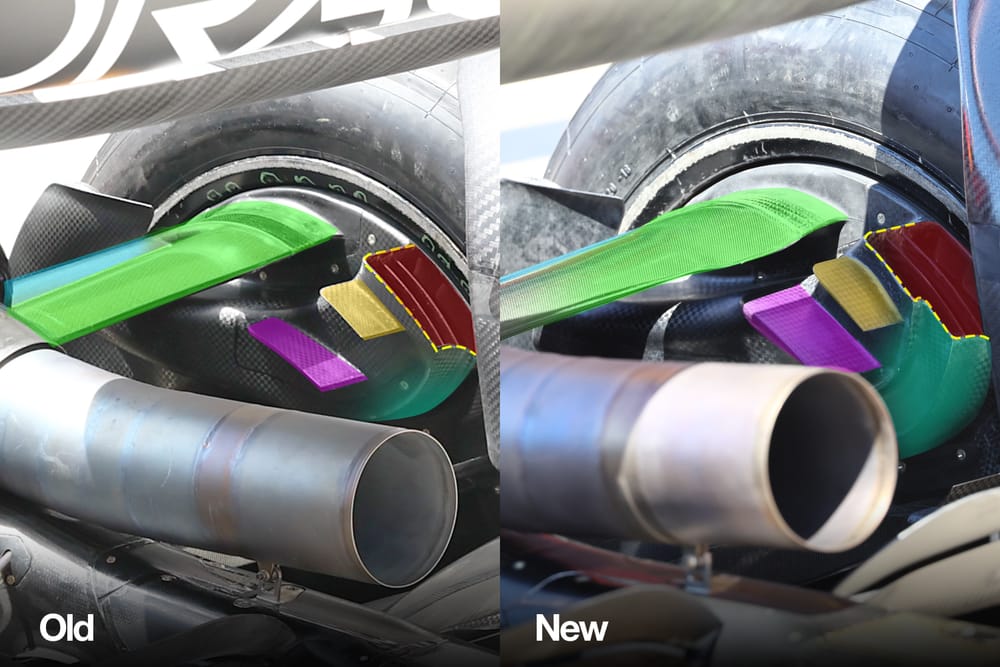Up Next

The Red Bull Formula 1 team brought along a few updates to Imola, and I must admit a couple of them confuse me a little.
But as I have said many times: who am I to question anyone’s development direction?
Starting at the front with Red Bull’s new front wing flap trim. From this development it looks like the team is still trying to get some front end grip.
The inboard section highlighted with the green line has increased in cord length, as has the inboard front flap trailing edge highlighted in red. They are also integrated slightly better but this change - although subtle - will have consequences further downstream where this altered flow goes into the inner section of the underfloor leading edge.
Red Bull has also altered the front wing endplate leading edge profile and the ‘ski ramp’ on the endplate’s outer surface.
The profile of the endplate itself (highlighted with the red line below) has altered slightly, which has allowed Red Bull to increase the width of the ski ramp at the leading edge - which is highlighted with the green arrows.
This is just again a small detail which will increase the outwash slightly, it may also have an influence on the centre of pressure shift with steering lock - again possibly in search for an increase in front end grip in medium and low speed corners when higher angles of steering lock are required.
Moving onto the sidepod leading edge and floor edge. The two pictures below are at slightly different angles but it does look like Red Bull has compressed the small turning vanes slightly rearwards. Putting the red arrow on the top of the initial vane to the tip of the second vane on the Miami version and then moving the same arrow onto the Imola version shows the difference. Not massive but a subtle change.
In Red Bull’s Imola upgrades declaration it talks about lowering the upper surface of the floor.
It can’t do much to raise the lower surface of the radiator inlet to increase the mass flow through this undercut area. All that is left is to lower the upper surface of the floor’s leading edge. This opens up the distance between the lower surface of the radiator inlet and the upper surface of the floor, achieving that increase of mass flow through that area.
Further rearward Red Bull has altered the detail of the rear top wishbone outer leg profile and the rear brake duct with its associated turning vanes.
The green shading below highlights the alteration to the trailing edge of the upper wishbone rear leg trailing edge. The magenta shading highlights a change in the lower turning vane - it is now at a slightly more aggressive angle. The red arrow shows the increased brake duct exit area, and it also shows the difference in angle that the flow coming out of the brake duct is actually at compared to the slightly inboard vanes.
This detail on the rear brake duct is something that can very easily influence rear end stability under braking. The aerodynamic load the rear brake duct turning vanes generate is directly on the upright assembly, so goes immediately into the rear tyre contact patch. Load from the underfloor and wings has a time lag as the suspension moves upwards because of the weight transfer generated under braking. At Imola this is exaggerated into Aqua Minerale and Rivazza 1 as both are downhill.
It’s probably just a coincidence that Red Bull seems to be having a bit of a hard time in Imola practice and I’m sure it will be back up to speed tomorrow for qualifying.
But if it was me, and considering what I was seeing today, I would be questioning the direction of some of these developments.
So what is the team missing? Perhaps it’s Adrian Newey on the pitwall. Only time will tell.



